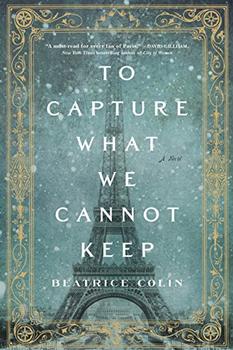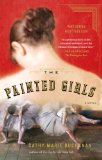Summary | Excerpt | Reading Guide | Discuss | Reviews | Beyond the book | Read-Alikes | Genres & Themes | Author Bio

Set against the construction of the Eiffel Tower, this novel charts the relationship between a young Scottish widow and a French engineer who, despite constraints of class and wealth, fall in love.
In February 1887, Caitriona Wallace and Émile Nouguier meet in a hot air balloon, floating high above Paris, France - a moment of pure possibility. But back on firm ground, their vastly different social strata become clear. Cait is a widow who because of her precarious financial situation is forced to chaperone two wealthy Scottish charges. Émile is expected to take on the bourgeois stability of his family's business and choose a suitable wife. As the Eiffel Tower rises, a marvel of steel and air and light, the subject of extreme controversy and a symbol of the future, Cait and Émile must decide what their love is worth.
Seamlessly weaving historical detail and vivid invention, Beatrice Colin evokes the revolutionary time in which Cait and Émile live - one of corsets and secret trysts, duels and Bohemian independence, strict tradition and Impressionist experimentation. To Capture What We Cannot Keep, stylish, provocative, and shimmering, raises probing questions about a woman's place in that world, the overarching reach of class distinctions, and the sacrifices love requires of us all.
The extra bonus is how gently Colin writes her prose, which I found to be sophisticated without being bombastic. Poetic interludes, describing the scenery and settings, work well without sounding clichéd. Colin's use of language also fits with the era she writes about, and helps contribute to the overall atmosphere of the book...continued
Full Review
(626 words)
This review is available to non-members for a limited time. For full access,
become a member today.
(Reviewed by Davida Chazan).
 While looking into the real personalities of the characters in Beatrice Colin's To Capture What We Cannot Keep, I came to realize just how enlightening this book actually is, simply because of the hints Colin gives us into a time in history about which most of us know only a tiny part. Yes, we all know the Eiffel Tower, but little about Eiffel himself, nor do we know the other masterful civil engineers and architects of the time. For example, French engineer Émile Nouguier and Swiss engineer Maurice Koechlin designed and patented the pylons for the Eiffel Tower, without which the structure wouldn't have succeeded. Prior to this, Koechlin collaborated with none other than Gustav Eiffel for the structural elements required to build the ...
While looking into the real personalities of the characters in Beatrice Colin's To Capture What We Cannot Keep, I came to realize just how enlightening this book actually is, simply because of the hints Colin gives us into a time in history about which most of us know only a tiny part. Yes, we all know the Eiffel Tower, but little about Eiffel himself, nor do we know the other masterful civil engineers and architects of the time. For example, French engineer Émile Nouguier and Swiss engineer Maurice Koechlin designed and patented the pylons for the Eiffel Tower, without which the structure wouldn't have succeeded. Prior to this, Koechlin collaborated with none other than Gustav Eiffel for the structural elements required to build the ...
This "beyond the book" feature is available to non-members for a limited time. Join today for full access.

If you liked To Capture What We Cannot Keep, try these:

by Cathy Marie Buchanan
Published 2014
Set at a moment of profound artistic, cultural, and societal change, The Painted Girls is a tale of two remarkable sisters rendered uniquely vulnerable to the darker impulses of "civilized society." In the end, each will come to realize that her salvation, if not survival, lies with the other

by Elizabeth Kostova
Published 2010
Kostova's masterful new novel travels from American cities to the coast of Normandy, from the late 19th century to the late 20th, from young love to last love. The Swan Thieves is a story of obsession, history's losses, and the power of art to preserve human hope.
Discovery consists of seeing what everybody has seen and thinking what nobody has thought.
Click Here to find out who said this, as well as discovering other famous literary quotes!